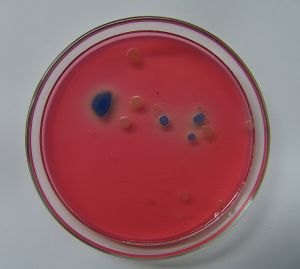Bacteria
Bacteria are a vital component of the biological ecosystem. Bacteria generate oxygen and consume carbon dioxide, fixate nitrogen, recycle nutrients, decompose sewage and waste and participate in a multitude of biologically fundamental processes. Found in every environment on Earth, including high and low pH surroundings and radical temperatures, bacteria make life possible.
-
The Facts
-
Bacteria are microscopic, single-celled organisms present in the world surrounding us. Bacteria have a vast array of functions and sizes and live on and in humans, animals, plants, soil and water. The majority of bacteria have not been studied or characterized, and only 26 of the possible 52 categories, or phyla, of bacteria have been cultured in the lab.
Misconceptions
-
The word bacteria has often been directly associated with the term germ. As a result of this association, bacteria have commonly been thought of strictly as disease-causing agents. Although some bacterium can cause human illness, the vast majority do not. Bacteria are actually quite beneficial and essential to human health and survival.
-
Benefits
-
Bacteria represent an enormous and diverse portion of the organisms living on earth. Much of this population is of benefit to humans and our environment. Thousands of species of bacteria are found on and in the human body--enabling digestion, providing immune benefits and protecting the skin. Nitrogen fixation in the soil is made possible by bacteria, as is fermentation, decomposition and the manufacture of medications such as antibiotics.
Type
-
There are thousands of species of bacteria. Scientists classify bacteria according to their shape, oxygen requirements or type of metabolism. Most bacteria are rod, sphere or spiral shaped and are either aerobic (requiring oxygen) or anaerobic (can not tolerate oxygen). Additionally, those bacteria that can metabolize carbon from carbon dioxide are termed autotrophes; those that cannot are called heterotrophes.
Identification
-
All bacteria fall under the scientific classification of eukaryotes--organisms that have a cell wall but lack a membrane-enclosed nuclei and organelles. Basic identification of bacteria can be done microscopically based on this cell structure. A more common and accurate method for identifying bacteria is done by staining a sample of the cell with a dye. The simplest of the staining methods is gram staining, which allows bacteria to be easily grouped into one of four types based on the composition of their cell walls. Today, bacteria may also be classified using DNA-based molecular methods.
History of
-
Bacteria were first identified in 1676 by Dutch scientist Antoine van Leeuwenhoek using a handcrafted microscope. Although the existence of microorganisms was hypothesized long before Leeuwenhoek, he was the first to observe bacteria, which he termed animalcules. During the mid-1880s and early 1900s, the field of bacteriology (later called microbiology) was developed and expanded by scientists such as Ferdinand Cohn, Louis Pasteur and Robert Koch.
Evolution
-
Bacteria are believed to have been the first life forms on earth. Fossils as old as 3.5 billion years have been found to contain ancient cyanobacteria. These simple prokaryotes were the dominant form of life on Earth for approximately 4 billion years. DNA studies have demonstrated that modern-day bacteria evolved from these earliest known bacteria.
-

Tidak ada komentar:
Posting Komentar